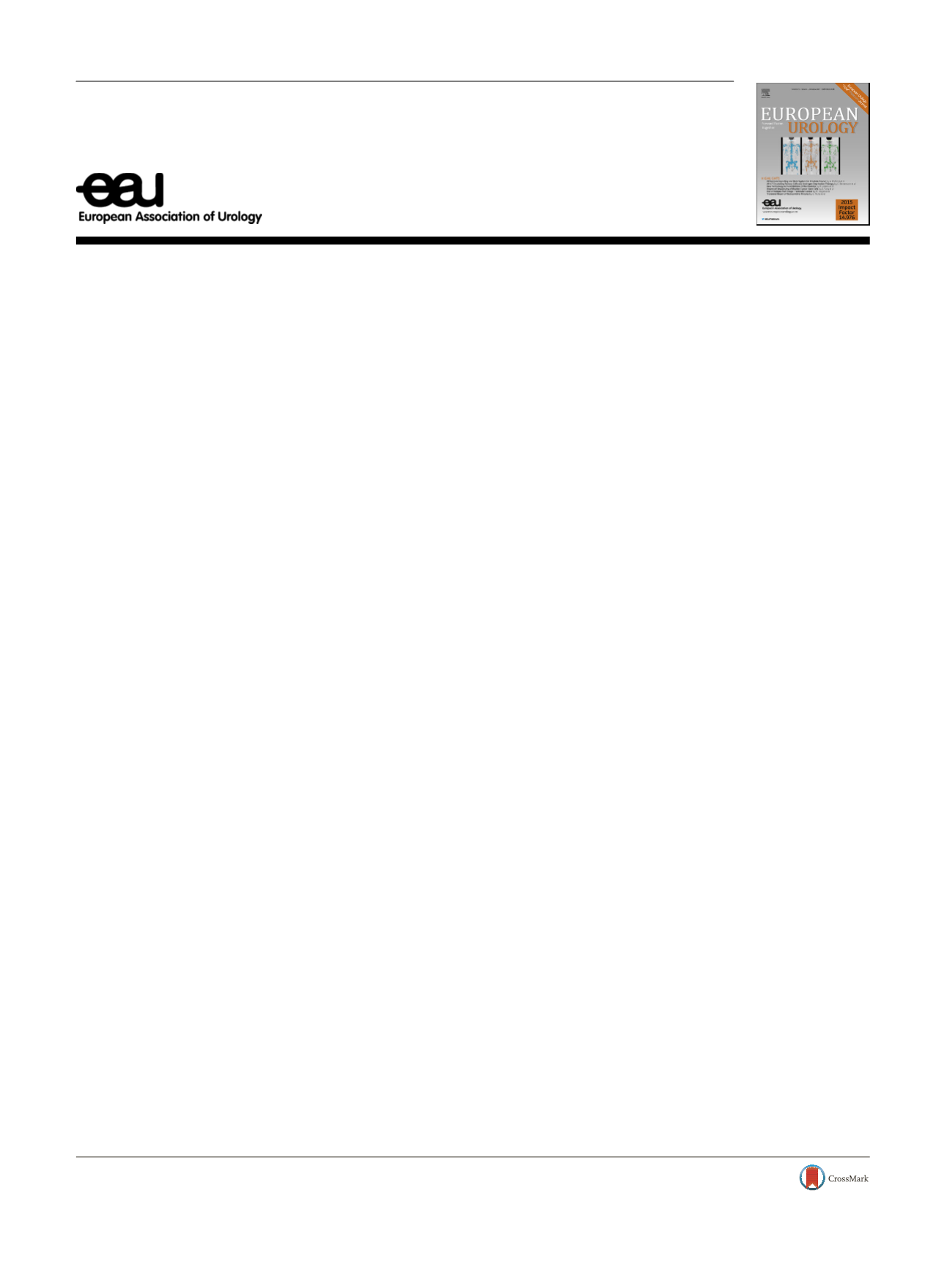

Platinum Priority – Editorial
Referring to the article published on pp. 776–787 of this issue
Prostate Cancer and Immune Monitoring: Are We Heading
Towards Better Selection of Patients and Treatment Strategies?
[3_TD$DIFF]
Martijn Lolkema, Reno Debets, Ronald de Wit
*[1_TD$DIFF]
Medical Oncology Department, ErasmusMC Cancer Institute, Rotterdam, The Netherlands
In less than two decades, the management of metastatic
prostate cancer has evolved from castration only to a
complex therapeutic field. Thus far, prostate cancer
nomenclature has reflected the point in time relative to
treatment, such as castration-resistant disease and post-
docetaxel disease. However, potential different subtypes
with therapeutic consequences have not developed beyond
Gleason’s classification of the primary tumor. The first real
attempt to improve classification comes from work on DNA
repair deficiencies, as up to 20% of prostate cancers harbor
defects in DNA repair pathways, so there is potential to
characterize a subgroup sensitive to DNA repair pathway
inhibitors
[1]. However, the question arises as to whether
this is the best we can do.
Molecular stratification of tumors has mostly developed
for tumor types that showed a clear need for identifying
(non-)responders to therapy. For prostate cancer, however,
a mere non-response to initial castration therapy is
uncommon. Of note, the majority of the clinical and
preclinical work on metastatic prostate cancer points
towards a crucial role of the androgen receptor (AR) in
driving this disease. These studies have provided the basis
for developing novel antihormonal treatments such as
enzalutamide and abiraterone that target residual AR
activity after castration, and mechanisms of resistance to
these compounds have been associated with reactivation of
the AR pathway
[2] .In addition, chemotherapy in prostate
cancer may, at least in part, represent a different way of
manipulating AR signaling
[3]. Thus, our paradigm has
remained that prostate cancer is a disease that mainly
depends on hormones.
In this issue of
European Urology
, Bovinder Ylitalo et al
[4]present their work on a 40 samples from a unique tissue
collection of 65 bone metastasis samples from surgical
resections. This tissue collection is unique; well-preserved
samples from bone metastases with sufficient amounts of
tissue for multiple validations are hard to obtain. Bovinder
Ylitalo and colleagues describe a robust analysis of gene
expression and validation by polymerase chain reaction and
in situ staining that point towards a subset of non–AR-
driven tumors. The non–AR-driven subgroup was charac-
terized on the one hand by low activities for cholesterol
biosynthesis,
b
-oxidation, and polyamine synthesis, and on
the other hand by high immunogenicity.
Although Bovinder Ylitalo and colleagues are to be
congratulated on their research findings, their work does
show some inherent weaknesses. The sample size of the
study (40 samples to construct a classifier) is limited.
Unsupervised clustering among such small samples is prone
to deliver false-positive signals. Moreover, the source of the
tissue may give rise to bias; patients who underwent
resection are likely to represent a selected subset of
patients, since palliative radiotherapy is a more common
approach for local treatment in most instances. Despite
these weaknesses, the study does provide the first evidence
connecting lower levels of immune cells and antigen
presentation with high AR signaling activity. These data
warrant and are highly likely to spark further studies to
unravel the mechanisms behind the suppression of antigen
presentation and low numbers of intratumoral monocytes
and T lymphocytes. Changes in tumor biology and
microenvironment that potentially determine the number
E U R O P E A N U R O L O G Y 7 1 ( 2 0 1 7 ) 7 8 8 – 7 8 9available at
www.scienced irect.comjournal homepage:
www.europeanurology.comDOI of original article:
http://dx.doi.org/10.1016/j.eururo.2016.07.033.
* Corresponding author. Medical Oncology Department, ErasmusMC Cancer Institute, P.O. Box
[4_TD$DIFF]
5201, 3008
[5_TD$DIFF]
AE
[6_TD$DIFF]
Rotterdam, The Netherlands.
Tel. +31 10 7041505.
E-mail address:
r.dewit@erasmusmc.nl(R. de Wit).
http://dx.doi.org/10.1016/j.eururo.2016.08.0140302-2838/
#
2016 European Association of Urology. Published by Elsevier B.V. All rights reserved.
















